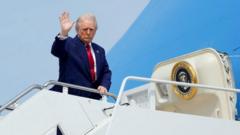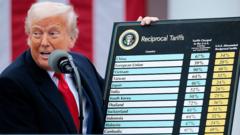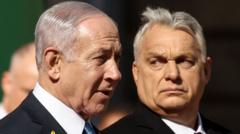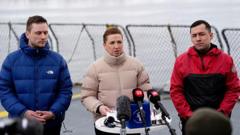This article examines the complex and unpredictable interactions between President Trump and Russian President Putin, highlighting recent tensions, diplomatic gestures, and the ongoing Ukraine crisis.
**Trump's Twisted Path in US-Russia Relations: A Geopolitical Spectacle**

**Trump's Twisted Path in US-Russia Relations: A Geopolitical Spectacle**
A look at the fluctuating dynamics of US-Russian relations under Trump.
In the strange and often bewildering world of international relations, US-Russian ties have become a rollercoaster ride under President Donald Trump. From moments of diplomatic warmth to sharp criticism, the trajectory seems to shift with a whim, leaving observers grasping for clarity. When Trump resumed the Oval Office in January 2025, his intention appeared to be clear: mend the frayed relations with Moscow. Phone calls with Putin, discussions around a potential peace deal, and even voting patterns that favored Russia in the UN signaled a thawing.
However, the mood darkened recently. Following Putin's proposal for "external governance" over Ukraine, Trump's frustrations with the Russian leader bubbled to the surface. Expressing disappointment over Putin’s remarks about Ukrainian President Zelensky, Trump found himself enmeshed in criticism from various fronts, including notable comments from Finnish President Alexander Stubb, who jolted Washington with warnings of dwindling patience regarding Russia's role.
As recent tensions unfolded, Trump escalated his rhetoric, suggesting severe tariffs on Russian oil if negotiations regarding Ukraine stalled further. Senate figures supported even stricter measures, proposing punishing tariffs reaching up to 500%. This shift in tone led to increased scrutiny from Russian media, which previously welcomed the warming ties. Publications turned sharply critical of the US administration's approach, deriding perceived "administrative insanity."
Yet, amid rising tensions, some complexities persist. Trump's announcement of tariffs did not target Russia, and key discussions between Kremlin officials and US counterparts continued, hinting at an underlying desire to maintain dialogue despite increasing rhetorical hostility. NATO allies voiced concern, with UK Foreign Secretary David Lammy painting a grim picture of Putin's ongoing aggression in Ukraine.
Rumors of another Trump-Putin phone call floated about, before being dispelled by the Kremlin, exemplifying the unpredictable nature of their communications. Amid all this noise, American businesses remain focused on opportunities in Russia, suggesting a complicated interplay between economic interests and political posturing.
The overarching question remains: Is the Trump administration prepared to truly pressure Moscow? The stakes are high as geopolitical drama unfolds, leaving observers, much like thrill-seekers on a rollercoaster, hanging in suspense. Explaining this diplomatic choreography requires a nuanced perspective, especially as both the war in Ukraine continues and election implications loom large.
However, the mood darkened recently. Following Putin's proposal for "external governance" over Ukraine, Trump's frustrations with the Russian leader bubbled to the surface. Expressing disappointment over Putin’s remarks about Ukrainian President Zelensky, Trump found himself enmeshed in criticism from various fronts, including notable comments from Finnish President Alexander Stubb, who jolted Washington with warnings of dwindling patience regarding Russia's role.
As recent tensions unfolded, Trump escalated his rhetoric, suggesting severe tariffs on Russian oil if negotiations regarding Ukraine stalled further. Senate figures supported even stricter measures, proposing punishing tariffs reaching up to 500%. This shift in tone led to increased scrutiny from Russian media, which previously welcomed the warming ties. Publications turned sharply critical of the US administration's approach, deriding perceived "administrative insanity."
Yet, amid rising tensions, some complexities persist. Trump's announcement of tariffs did not target Russia, and key discussions between Kremlin officials and US counterparts continued, hinting at an underlying desire to maintain dialogue despite increasing rhetorical hostility. NATO allies voiced concern, with UK Foreign Secretary David Lammy painting a grim picture of Putin's ongoing aggression in Ukraine.
Rumors of another Trump-Putin phone call floated about, before being dispelled by the Kremlin, exemplifying the unpredictable nature of their communications. Amid all this noise, American businesses remain focused on opportunities in Russia, suggesting a complicated interplay between economic interests and political posturing.
The overarching question remains: Is the Trump administration prepared to truly pressure Moscow? The stakes are high as geopolitical drama unfolds, leaving observers, much like thrill-seekers on a rollercoaster, hanging in suspense. Explaining this diplomatic choreography requires a nuanced perspective, especially as both the war in Ukraine continues and election implications loom large.






















